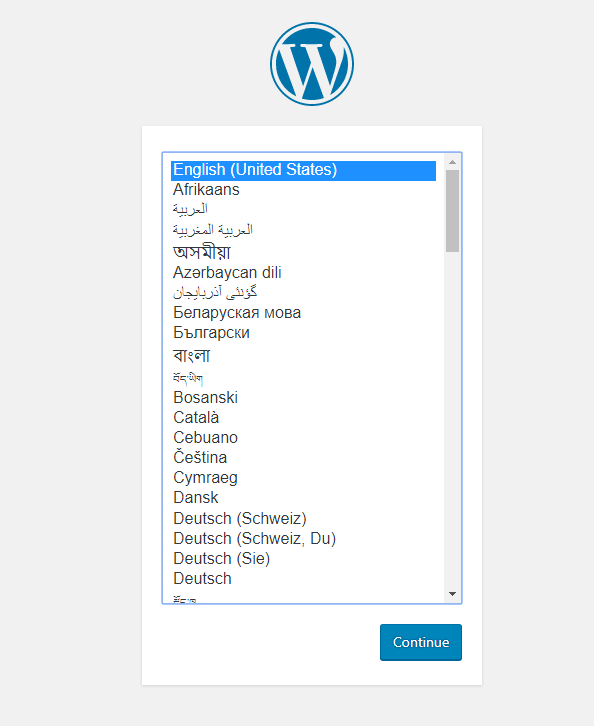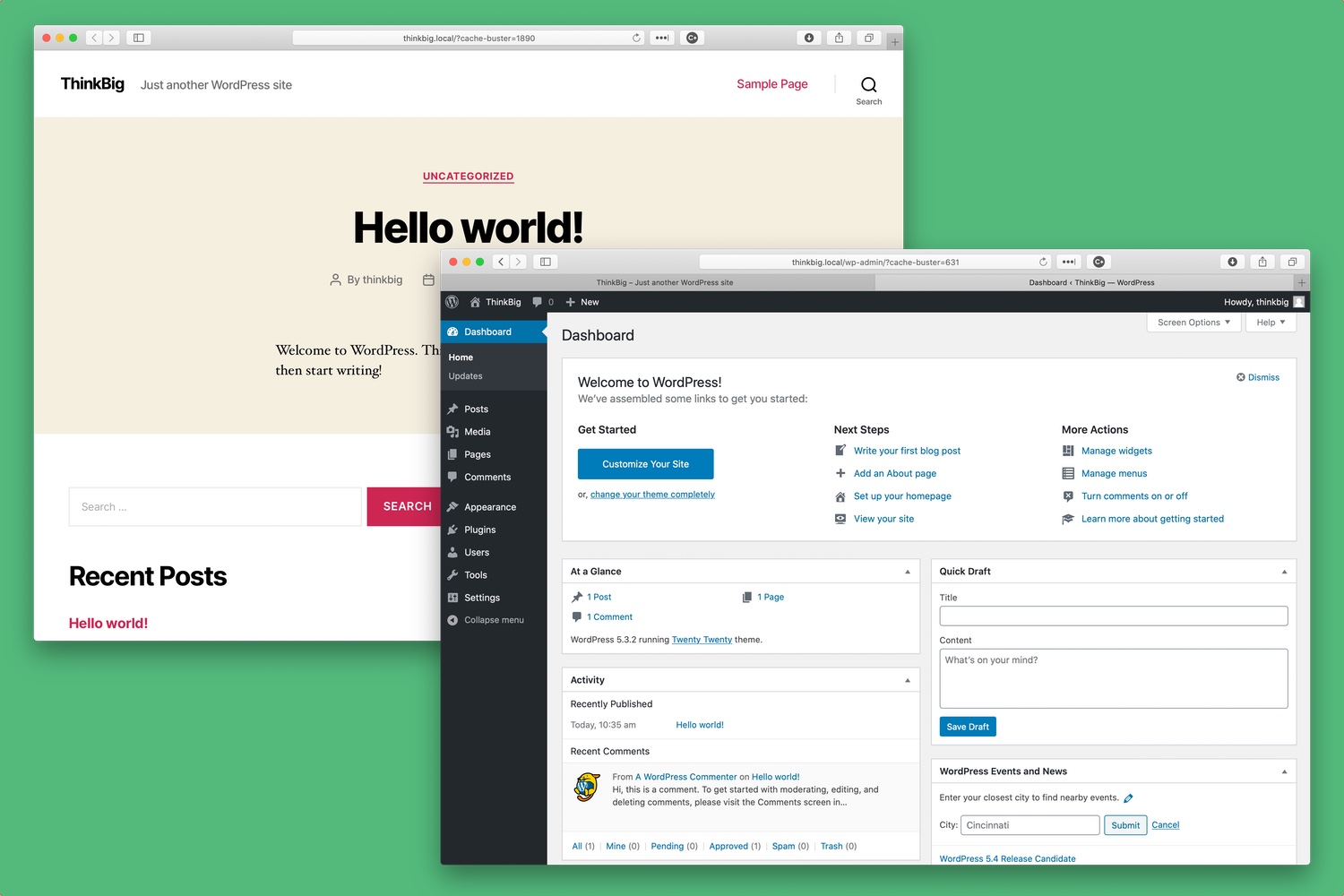Local Wordpress
In this lesson, you will learn how to install WordPress locally on your own computer.
When you want to install WordPress locally, you need to get a local AMP stack set up on your machine. In the case of WordPress, AMP stands for Apache, MySQL, PHP. These are the software needed to mimic what a managed WordPress host would be running for you on its web server. There are a variety of methods you can use to do this. To run WordPress locally, you need to have a server. In this lesson, you will learn to set up a server, create a database and install WordPress on your computer.
- Installing WordPress locally is usually meant for the purpose of development. Those interested in development should follow the instructions below and download WordPress locally. AMPPS: Free WAMP/MAMP/LAMP stack, with inbuilt Softaculous Installer. Can 1 click install and upgrade WordPress and others as well.
- RESOLUTION 04-2021-6 – BUDGET AMENDMENT, GENERAL FUND, LOCAL HEALTH CENTER $2,755.07 (NORRIS). This resolution carried over previously unused but allocated tobacco funds in the Health Department Budget and was approved unanimously.
Prerequisite Skills
Participants will get the most from this lesson if they have familiarity with:

- Experience downloading and installing programs on their computer.
- Administrative access to their local machine.
- Familiarity with the file system of their computer.
Objectives
After completing this lesson, participants will be able to:
- Download, install and configure MAMP.
- Start MAMP servers.
- Create a database.
- Download and install WordPress.
Materials Needed
Screening Questions
- Have you ever used WordPress?
- Have you created posts and pages in WordPress?
- Have you changed a theme in WordPress?
- Have you ever wanted to look under the hood of WordPress?
Notes for the Instructor
- Ahead of the lesson, make sure you take a look at your own computer setup. If you have MAMP or MAMP Pro already installed on your machine, you may want to run this demo on a virtual box to avoid conflicts with existing software and local sites that you may want to keep on your machine.
- Sometimes it can take a while to download large files like MAMP or WordPress core. You may want to have a copy of MAMP and the current version of WordPress downloaded and stored on a thumb drive that can be passed around the class before you start the lesson. In the context of the demo, you would still show where to download these files but would skip the actual live download.
- MAMP is updated quite often. Please be sure to walk through the lesson plan with a fresh install to be sure it is still up to date.
Lesson Overview
To run WordPress locally, you need to have a server. In this lesson, you will learn to set up a server, create a database and install WordPress on your computer.
Install MAMP
MAMP stands for My Apache, MySQL, and PHP. MAMP is an application you can install on your Mac or Windows PC that allows you to have access to a local server that is running PHP and MySQL. Essentially, MAMP gives you all of the tools you need to run WordPress on your machine, for development and testing purposes.
- To install MAMP, go to https://www.mamp.info/en/downloads/.
- Download the version of MAMP that corresponds with your machine (Mac OS X or Windows).
- Double click on the downloaded file. This will open the installation dialog.
- Next, we’ll follow the prompts in the dialog to complete the installation. This course uses the default settings recommended by the install dialog.
Open and configure MAMP
- Now that MAMP is installed, let’s open it up! MAMP has a button to start servers when first started. By clicking on “Preferences” you can select an option to start the Apache HTTP Server and MySQL database server upon starting MAMP.
- Click on the “preferences” icon. You’ll see that there are several tabbed menu items available.
- Click the “Web Server” tab and find the “Document Root.” This path is where MAMP expects to find the files associated with your local website. In this case, this is where the WordPress files will need to be located to run them on the server. You may change this directory to whatever you want. The default is “/Applications/MAMP/htdocs” on a Mac and “C:/MAMP” on Windows.
Set up a Database
- Next, we will create a database on your new MAMP server. This database will become the database for the locally installed WordPress site.
- Go back to the MAMP dialog and click “Start.”
- Using the menu bar at the top of the page, click “Tools -> phpMyAdmin.”
- The phpMyAdmin dialog will appear.
- Click the “New” link in the left menu sidebar.In the following dialog, use the name “mydatabase” to name the database:
- Leave the “Collation” option as default.
- You now have a database called “mydatabase.” Congratulations!
Install WordPress
- Now we’re ready to install WordPress on our local machine! Go to https://wordpress.org/download/ to download the most recent version of WordPress. Once you download and copy the WordPress files to your computer, you will be able to install WordPress using the traditional 5 Minute Install.
- Move the downloaded zip file to the default server directory, “/Applications/MAMP/htdocs.” You could expand the zip file in your downloads folder and move the expanded folder and its contents, but sometimes the “hidden” system files that are included in WordPress (like the .htaccess file) fail to copy over to new folders if the contents are unzipped. For that reason, we’ll leave our zip file zipped while we’re moving it.
- In the new”/Applications/MAMP/htdocs” location, double click the WordPress zip file and it will expand. Remove the zip file and the index.php file.
Local Wordpress Download
- Go back to your web browser, and in the black menu bar, click the link “My Website.”
- The link will take you to a list of websites installed in the directory. Click the “WordPress” link. This link will take you to the 5 minute WordPress install.
- Get ready to enter your database information:
- Your “Database Name” is: mydatabase
- Your “User Name” is: root
- Your “Password” is: root
- Your “Database Host” is: localhost
- You can leave the “Table Prefix” as the default: wp_
- Now, let’s click the “Submit” button to run the install.

- Click the “Run the install button” and then choose a username and password on the next screen. That’s it! You’re ready to log in!
- The link for your new site: http://localhost:8888/wordpress/. You will log in at this URL: http://localhost:8888/wordpress/wp-login.php.
Exercises

The following exercises reinforce the skills needed to install WordPress locally:
Practice Using phpMyAdmin
- Navigate back to phpMyAdmin on your localhost.
- Click on the name of your database to view the contents of your database now that you have installed WordPress.
- When looking at the database tables, scroll to the bottom of the page and click the “check all” box. Then in the dropdown that says “With Selected” choose “Export” and follow the prompts to practice backing up your database.
- Practice making a new database within phpMyAdmin.
Try Installing a Second WordPress Local Site
Go through the exercise demonstrated in this lesson again and try setting up a second instance of WordPress on your local machine in a new location.
- Make sure the document root matches wherever you’ll keep your files for the second instance of WordPress.
- Set up a new database using phpMyAdmin.
- Extract the WordPress files in a new location on your computer.
- Run the famous 5 minutes install for your new local site.
Assessment
What does “MAMP” stand for?
- My Computer, Apple, MySQL, PHP
- My Computer, Apache, MySQL, PHP
- My Apache, MySQL, PHP
- Macintosh, Apple, MySQL, PHP
Answer: 3. Macintosh, Apache, MySQL, PHP
Local Wordpress
What is the user name and password for any named local install?
- username: root; password: localhost
- username: localhost; password: localhost
- username: root; password: root
- username: localhost; password: root
Answer: 3. username: root; password: root
What systems can MAMP run on?
- Macintosh
- Windows
- Macintosh and Windows
- Linux
- Macintosh, Windows and Linux
Answer: 3. Macintosh and Windows
Additional Resources
- WordPress Installation Techniques @ Codex
